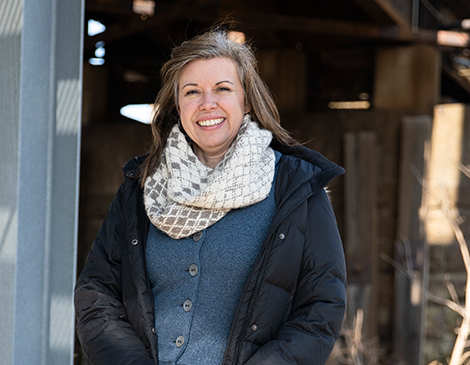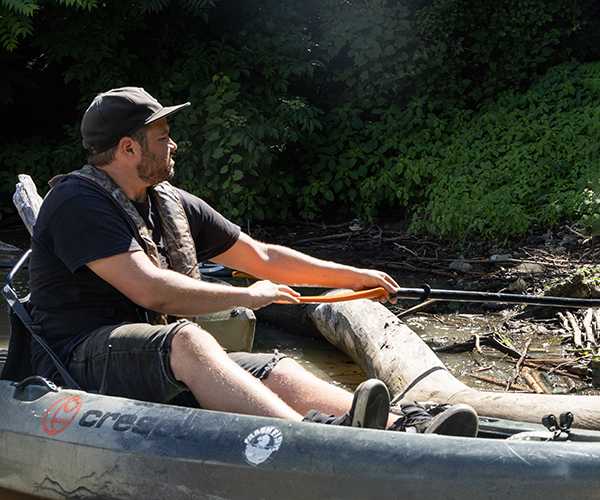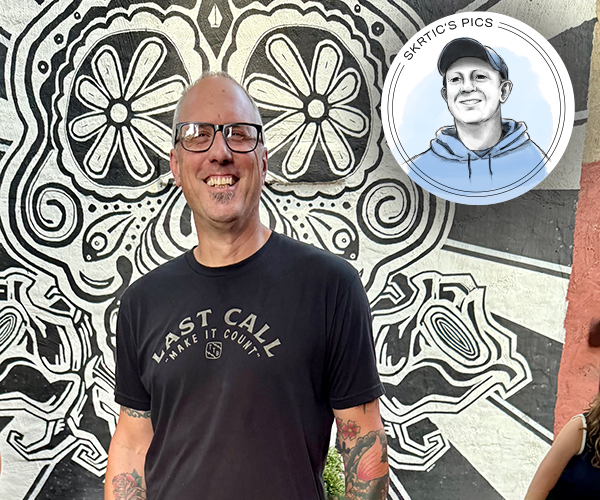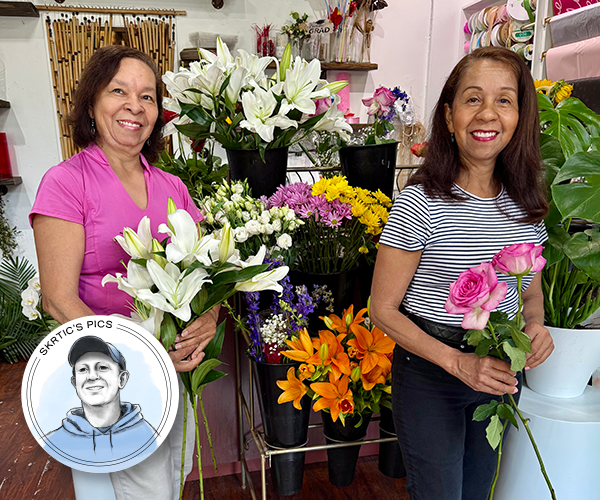Mera Cardenas greets a man with an easel on the West 13th Street overlook in Tremont, who was painting a landscape of the Flats. “I’m with Canalway Partners,” she says. “Who is that?” asks the painter. “The easiest way to explain it is we’re the people who brought you the Towpath Trail,” she tells him. The painter cooed in recognition. Cardenas has had a lot of similar interactions lately.
She took over as Canalway Partners’ new executive director in January, and will be helming the 35-year-old organization, which moved its headquarters from Brecksville to the Flats earlier this year. She’ll lead Canalway Partners toward the completion of the Cleveland portion of the Towpath Trail in 2021, a signature project that has been decades in the making. A former journalist and historic preservationist, Cardenas moved to Cleveland from Atlanta, where she most recently headed up the national heritage area for the Arabia Mountain region. We chatted about her career, the river and the Towpath’s bright future.
On her rustbelt roots:
I’m originally from Uniontown, Pennsylvania. I grew up in the region. [It was] a coal mining town. I’m descended from coal miners. My dad was from the Philippines, and I recently learned — I didn’t know this at the time — that my great-grandfather worked at [manufacturer] Warner & Swasey. So, I have Cleveland roots that I didn’t even know about until I came here.
On her 18 years at CNN:
The first half of that was in the newsroom. I was first a writer at Headline News, then a field producer for the affiliate news service called Newsource, which actually brought me to Cleveland for the Rock & Roll Hall of Fame opening. I was the producer on that story. I still haven’t uncovered my pictures from then. It’s just a matter of finding them.
On why finishing Canal Basin Park in the Flats helps connect Cleveland to the larger trail:
This is not only where Cleveland started, it’s also where the [Ohio & Erie] Canal started. History is a lot about understanding the landscape, because that influences so much about how we as humans move in it. ... In a lot of ways, the canalway was a part of the built world. Cleveland would have never been the fifth largest city in the country without the canal. [It’s about] understanding the past to build your future.
On connecting people to the Cuyahoga River:
I haven’t been in Cleveland very long, but what I’m getting is that [the Towpath] is a mechanism that is getting people back to the river. There’s been a lot of movement, whether it’s the rowing club, Phastar or the Foundry, that’s been going on. But it feels like the awareness of people about the river is beginning to change.
On the promise of a finished towpath for Clevelanders:
I hope that the people who live adjacent to a trail, that they feel that their lives are enhanced by that. I hope they feel that it connects them more to the river and other parts of the city. I hope that they have a better understanding of the city and the city’s history, and of their neighbors. Passing people on the street is a great equalizer, and trails and greenspaces have that opportunity to draw people together.




